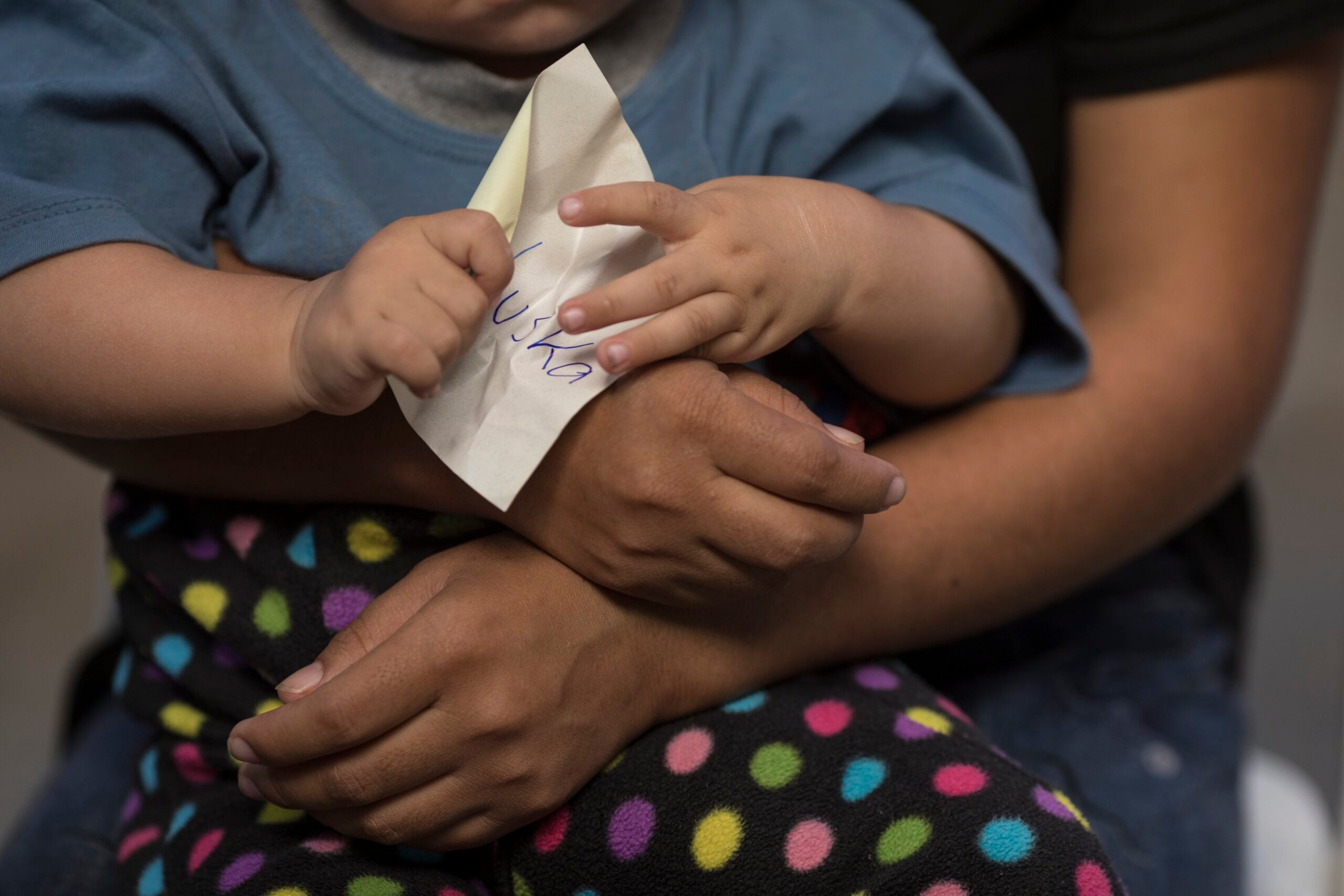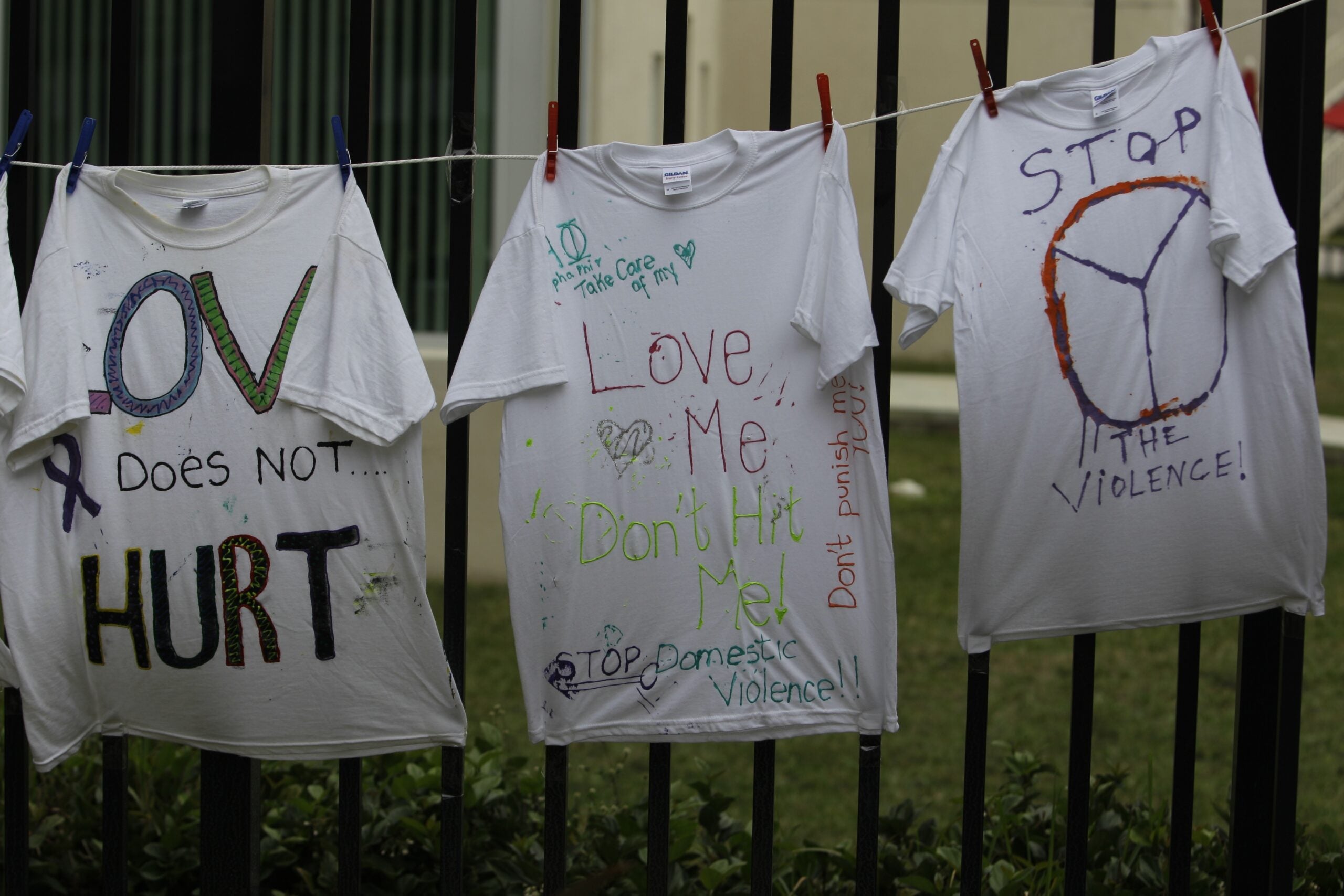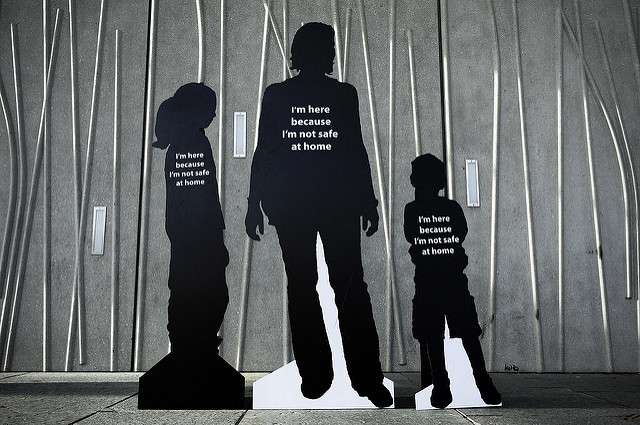Domestic abuse touches many lives, and has a large impact on the economey as well. Larry Meiller finds out how prevalent it is, what resources are available for victims and survivors, and what we can each do to help stop the violence.
Featured in this Show
-
Domestic Violence Can Happen To Anyone, Anywhere
October is Domestic Violence Awareness Month, and unfortunately, there remains a great need for education, support and accountability to stop domestic violence.
Statistics speak to the problem’s impact. Nationally, between one in four and one in three women are expected to experience domestic violence at some point in their lives, as well as one in 10 men. That means 2 million to 4 million people each year in the country. In Wisconsin, more than 40,000 women, men and children each year access services through local agencies and shelters.
Patti Seger, the executive director of End Domestic Abuse Wisconsin: The Wisconsin Coalition Against Domestic Violence, said that the state’s domestic violence programs conduct an annual one-day census to get a snapshot of the problem. And depending on the year, between 1,500 and 1,700 state residents are seeking services daily.
Seger said that there are many ways that domestic abuse is perpetrated, including the killing of the victim. End Domestic Abuse Wisconsin publishes a domestic violence homicide report every two years. The most recent report, which covers 2011 and 2012, reveals that 89 Wisconsinites died as the result of domestic violence.
These aren’t just statistics, of course. Both the intended victims and others around them suffer the consequences of this violence. In fact, just one year ago on Monday, the state experienced the tragedy of the Azana Spa shooting in Brookfield, when Radcliffe Haughton killed his estranged wife, Zina Haughton, and two of her co-workers. Four other women were also wounded in the shooting and Radcliffe Haughton committed suicide at the scene.
Human nature sometimes leads people to think that crimes like domestic abuse don’t happen in their own communities or families. But Seger said, “Domestic abuse happens in all communities, all cultures, all races and ethnicities, all religious groups, all education levels, all income levels.”
She went on to explain that the perception that abuse happens more in lower-income communities might be due to the higher level of population density. So, with more neighbors nearby and within hearing range, there is a greater likelihood of calls to the police and intervention.
“We don’t see as many cases that have law enforcement contact coming out of more affluent neighborhoods, but it doesn’t mean that domestic violence doesn’t exist there,” she said.
Without diminishing the impact on the individuals affected, there are societal costs as well. Economically, Seger said that the costs are huge and include health care, missed work and lower productivity. According to the U.S. Centers for Disease Control and Prevention’s intimate partner violence site, these are some of the costs of domestic violence:
- The cost of intimate partner violence exceeds $5.8 billion each year, $4.1 billion of which is for direct medical and mental health services.
- Victims of intimate partner violence lost almost 8 million days of paid work because of the violence perpetrated against them by current or former husbands, boyfriends and dates. This loss is the equivalent of more than 32,000 full-time jobs and almost 5.6 million days of household productivity as a result of violence.
- There are 16,800 homicides and $2.2 million (medically treated) injuries due to intimate partner violence annually, which costs $37 billion.
In addition, the impact on the social fabric is significant. Seger said that “the no. 1 cause of homelessness for women with children in the United States is domestic violence, and that they’re fleeing an abusive relationship.”
For those who are experiencing violence in a relationship, they can find a local domestic violence program through the “Get Help” section of End Domestic Abuse Wisconsin’s website. In addition to the local program listings, there are also specific resources for tribal members as well. End Domestic Abuse Wisconsin also provides advice for safely accessing help without the abuser finding out.
Seger said the most important thing that people or loved ones can do to help victims of domestic abuse is to be a lifeline for them. People should let the victim or victims know they are supported and that people want to help. They should be assured that people won’t judge them for the choices they make, and make sure that they know that they aren’t to blame for the abuse.
For more information and for support, any community member can contact the local domestic abuse program.
For those who live outside of Wisconsin, they can find out about local resources through the National Domestic Violence Hotline. According to the hotline’s website, “highly trained expert advocates are available 24/7 to talk confidentially with anyone experiencing domestic violence, seeking resources or information, or questioning unhealthy aspects of their relationship.”
A listener who identified herself as Liz shared this advice as a survivor of domestic abuse.
“For parents of a victim, stay in touch. Don’t push. Get together at holidays and stay in regular contact. Be supportive without judging. The victim will need you when they are ready. If you push, they will stay with the abuser longer,” she said.
Episode Credits
- Larry Meiller Host
- Judith Siers-Poisson Producer
- Patti Seger Guest
Wisconsin Public Radio, © Copyright 2024, Board of Regents of the University of Wisconsin System and Wisconsin Educational Communications Board.



